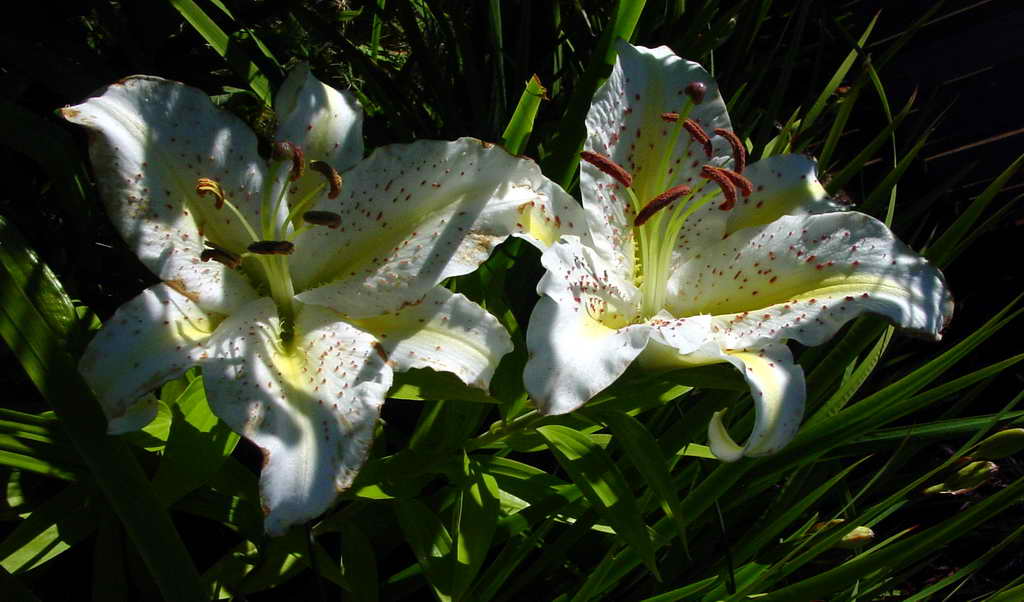

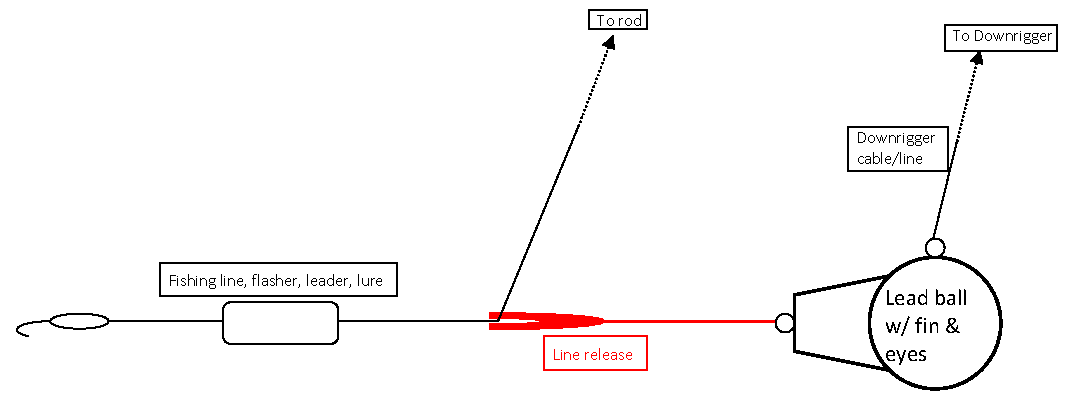
The lead ball is heavy enough such that at trolling speed it is hanging approximately straight down. The fishing line from the rod with terminal gear is clipped into a line release. This release is like a clothes pin and when the fish tugs at the lure the fishing line is pulled from the release and the fish is fought clear of the downrigger. The line is clipped into the release at the surface and the lead ball lowered to the desired depth. The downrigger I chose is a small unit, a Scotty DepthMaster. This is the smallest downrigger Scotty makes that has a line counter. The mount is made from Schedule 40 PVC pipe and fittings. See the design and construction link at Demonick Kayak Fishing Pages: Downrigger mount.
I've made two shakedown cruises with the downrigger and now am more comfortable. With the downrigger deployed the kayak has tendency to pull to the side. I was able to compensate with opposite rudder, but I can imagine some wind conditions where I may run of rudder authority. In which case I'll have to pull up the gear.
Spent 8 hours yesterday pedaling about at 1.0-1.3 kts trolling for salmon. 9 nautical miles later no fish, but tired legs and sweaty, stinky fisherman. It was rather frustrating. I was running a Purple Haze flasher, and "Irish Cream" (green & white) and "Cookies a& Cream" (black & white) spoons, all of which are well known fish producers.
There were many large (soccerball sized) yellow,
"Egg Yoke" jellyfish (Phacellophora camtschatica) in the water.


I also saw a couple soccerball sized red Lion's Manes jellyfish.Cyanea kils.
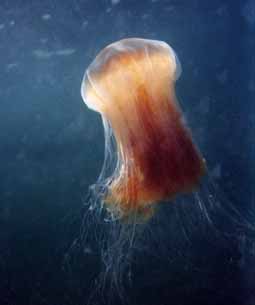
Despite 8 hours of constant pedaling, trolling for salmon, all I brought up were clumps of grass and endless long strings of jellyfish snot covering my gear. Salmon will not touch gear with jellyfish snot. At one point, suddenly, the clicker on my reel buzzed out a few feet of line then stopped. Either it was a fish hit that didn't stick or it was something else, so I decided to check the gear. When I got the ball to the surface I found a full-sized Lion's Mane jellyfish wrapped around the downrigger line. Yuck.
However, the downrigger performed well. Here's a sonar screen shot of the ball being lowered in two steps to about 50 feet.
I fished in waters from 75 to 450 feet deep, and regardless of the water depth virtually all the fish I saw on the sonar were above 50 feet and most of them above 30 feet. All the fish behaved the same - they ignored my bait. Here are a couple sonar screen shots of fish ignoring my bait. The green/blue line at about 30 feet is my downrigger ball and the depth at which my gear is running. The first shot is a bait ball with a number of fish (salmon?) feeding. The second shot shows three salmon traveling together.
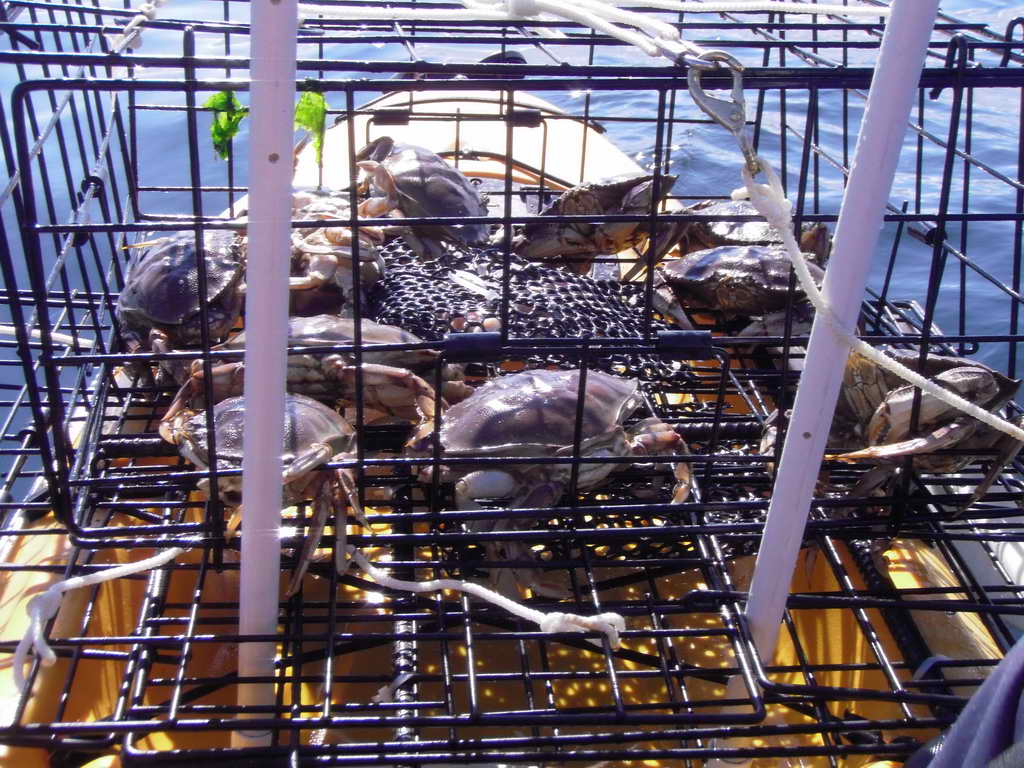
My friend, K, owns a Piper Dakota that I found for him a couple of years ago. About 3 years ago G and I were having our plane's annual inspection done at our mechanics home field. During a break the mechanic asked if I wanted to see something cool. He unlocked the hangar next to his own and inside was a pristine 1979 Piper Dakota. This was a 30 year-old plane with only 500 total airframe and engine hours, maintained my our mechanic and flown regularly but sparingly. It had all its original paint and upholstery, despite inactivity the engine was in good shape, autopilot, and hangared all its life. It even had the original cabin curtains.
I knew K was looking for a plane, a low-wing, and I passed on the info. After negotiating with the owner and having a pre-buy inspection done, he bought it. He got his IFR rating in it recently, and I got my high-power endorsement in it last year so I can act as his safety pilot.
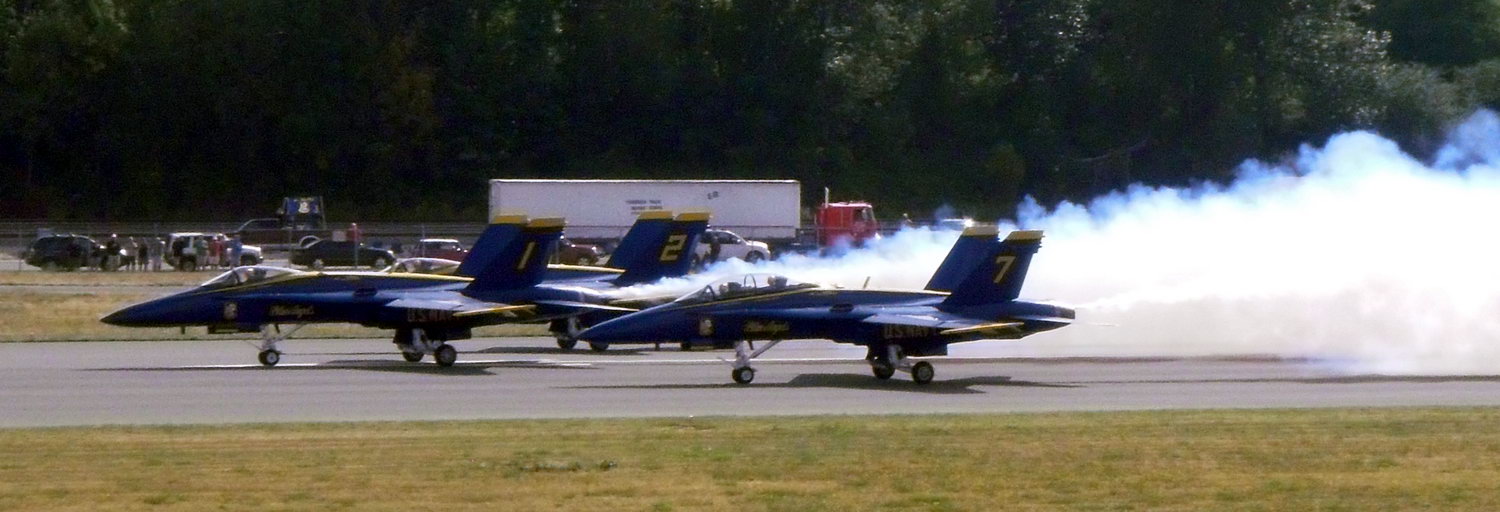
Then landing and taxiing by.
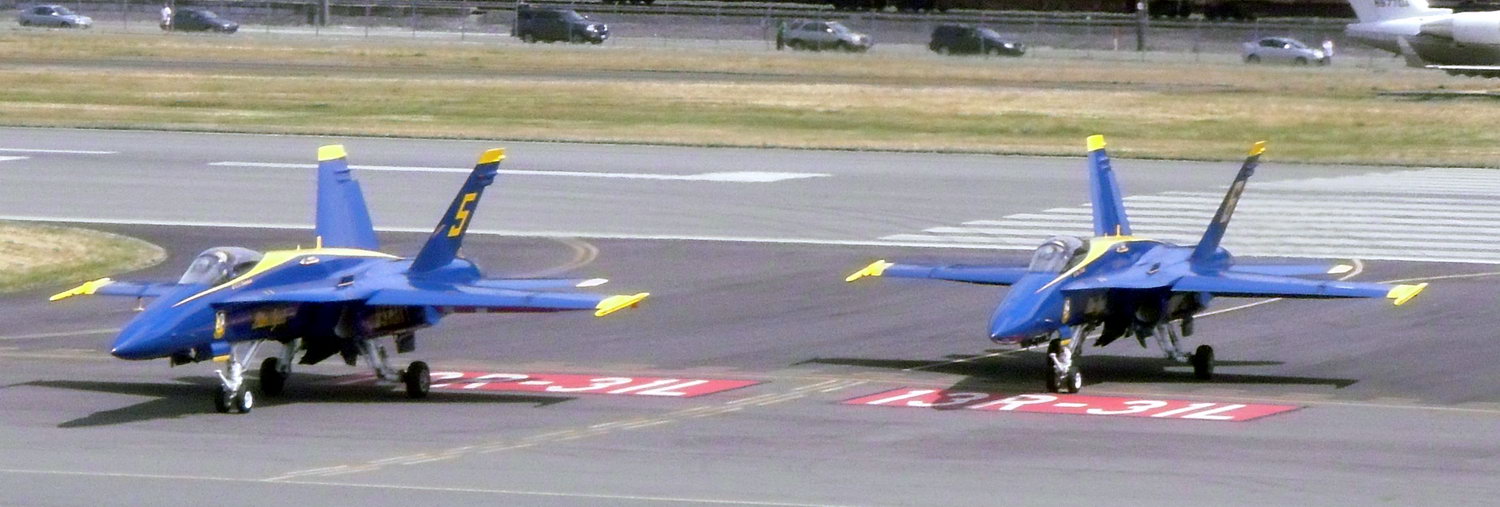
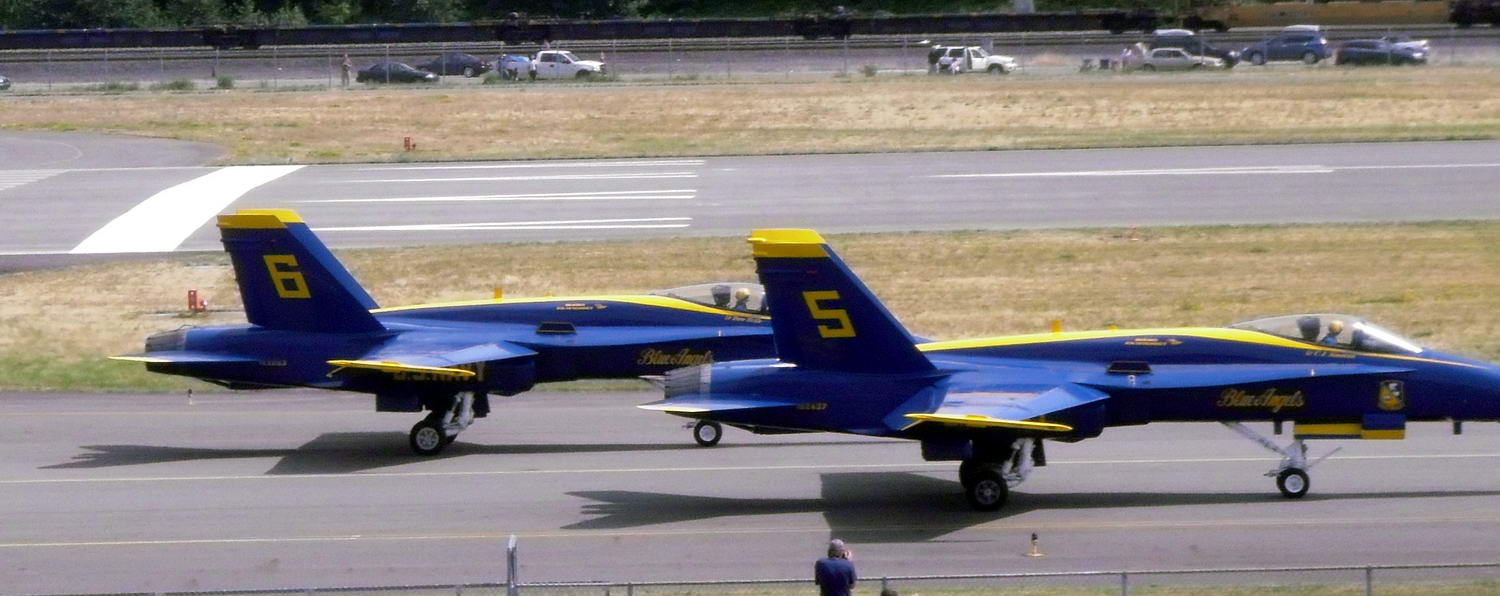
Went out on a friend's boat yesterday afternoon onto Lake Washington to watch the Blue Angels practice over the Seafair hydroplane race course. We were just north of the Mercer Island floating bridge directly under one of their approach paths. Numerous times, singly and in formation, they screamed overhead at about 100 feet. I did manage a few photos.
The show always starts with their support plane, Fat Albert, a Lockheed C-130 transport plane.
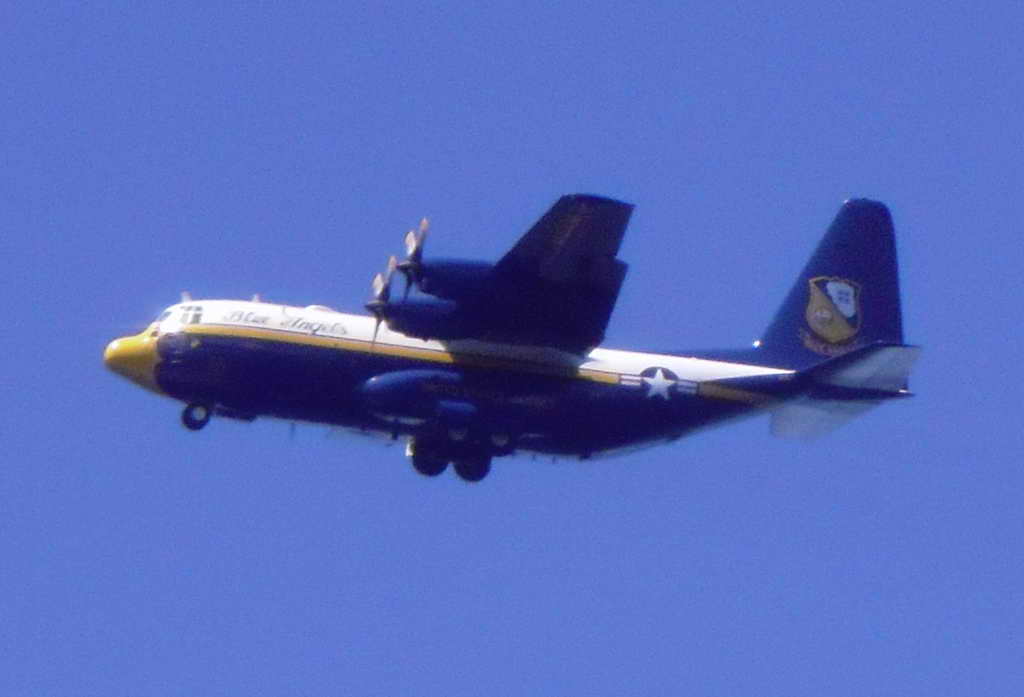
This is their dirty formation in which they come in at approach speed in formation with all their drag out, gear and hooks down.
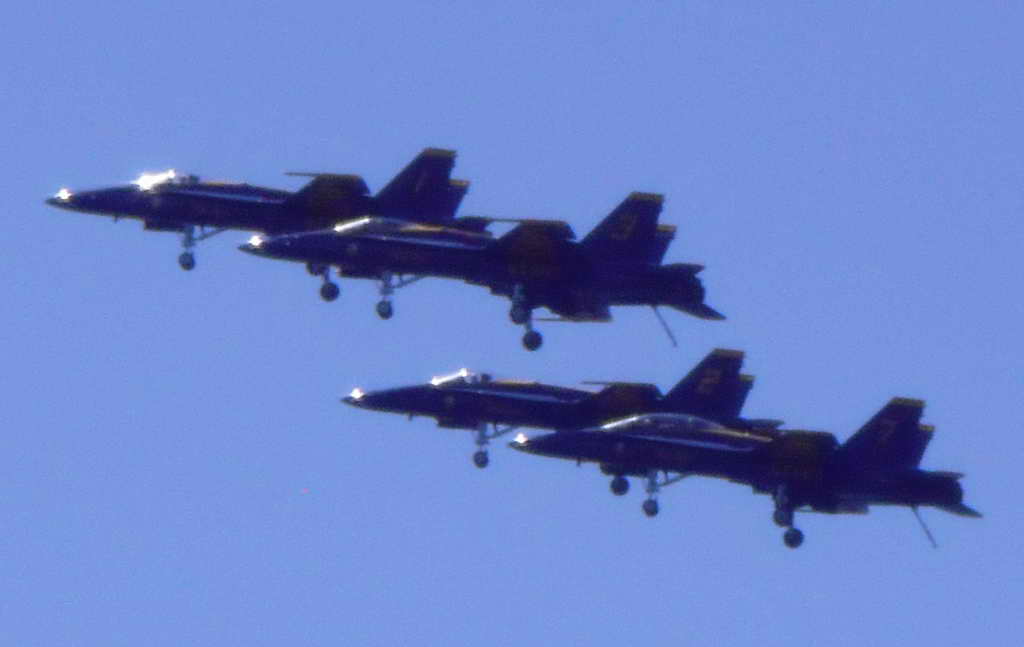
A number of solo passes over us, one was inverted with smoke on.
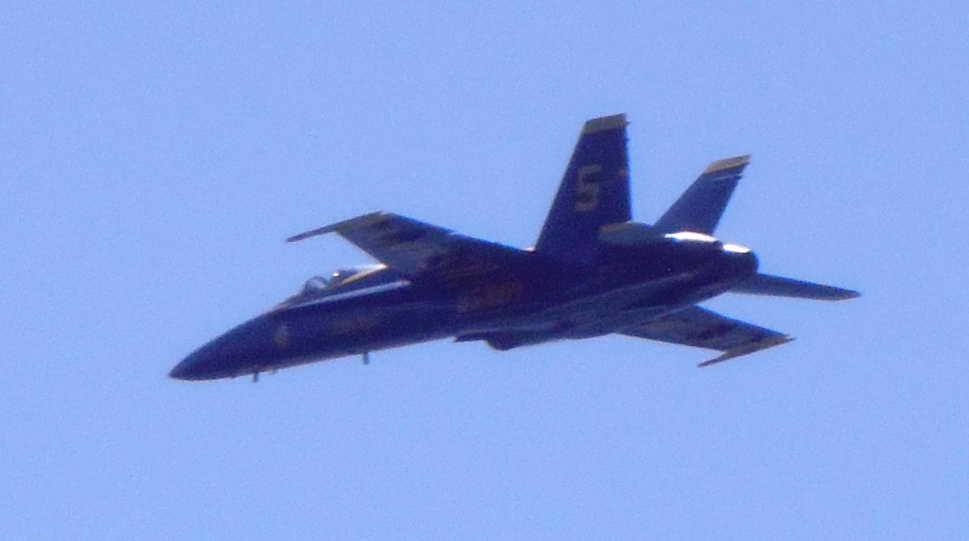
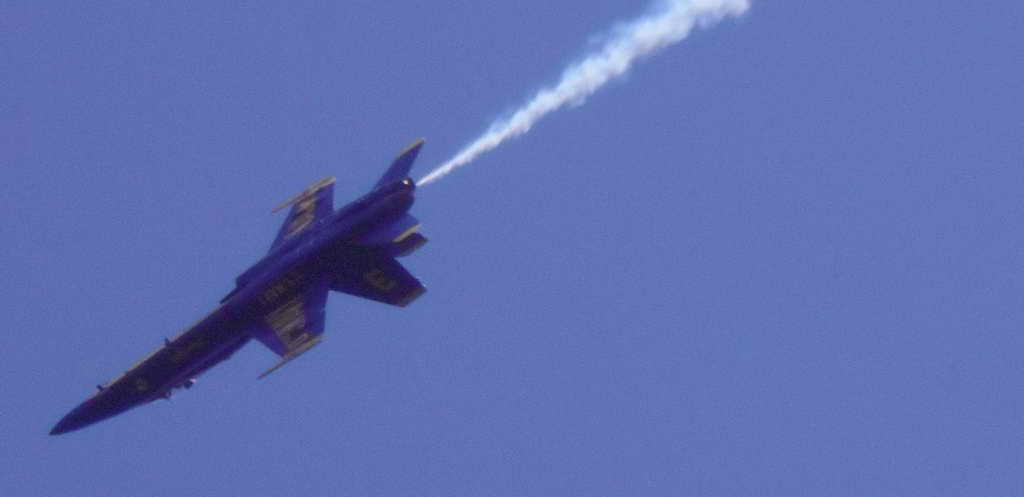
All six planes (one out of frame) were chest shakingly loud!
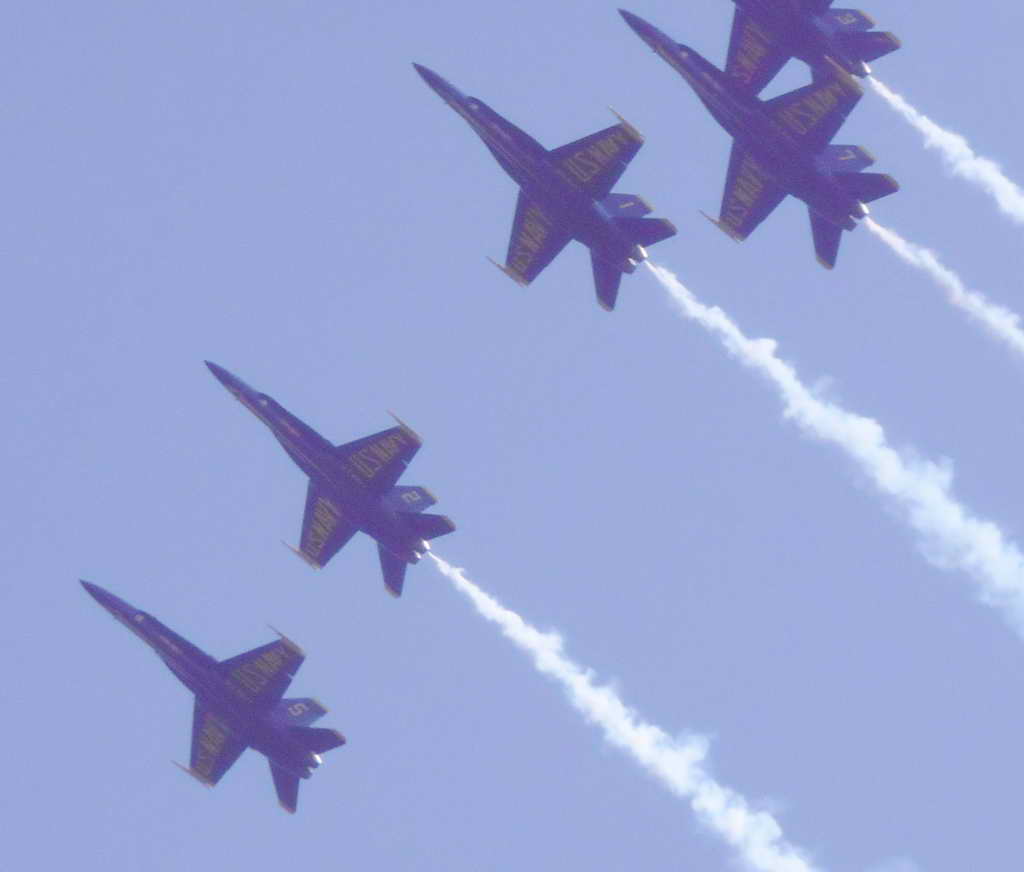

The raspberries and peas are finished and are dying back. After the leaves yellow up J will cut them back. We just planted some beans a few days ago and they should be coming up soon. The tomatoes are just starting to make tomatoes, and the squash and pumpkins are just starting to make fruit. Actually, we may start harvesting some of the yellow pattypan squash next week. The breba crop of figs is still growing and ripening. It also appears the Desert King fig tree is starting to put out a main crop of figs as well.
The yellowing back row are the raspberries, tomatoes are caged, and the foreground is squash and pumpkins. Between the caged tomatoes and the squash are a row of dusky-green brussel sprouts. To the left are some red poppies which we planted the first year here with sunflowers and both have successfully self-propagated and spread around the yard randomly.

The butternut squash babies are springing up all over. Three on one plant.
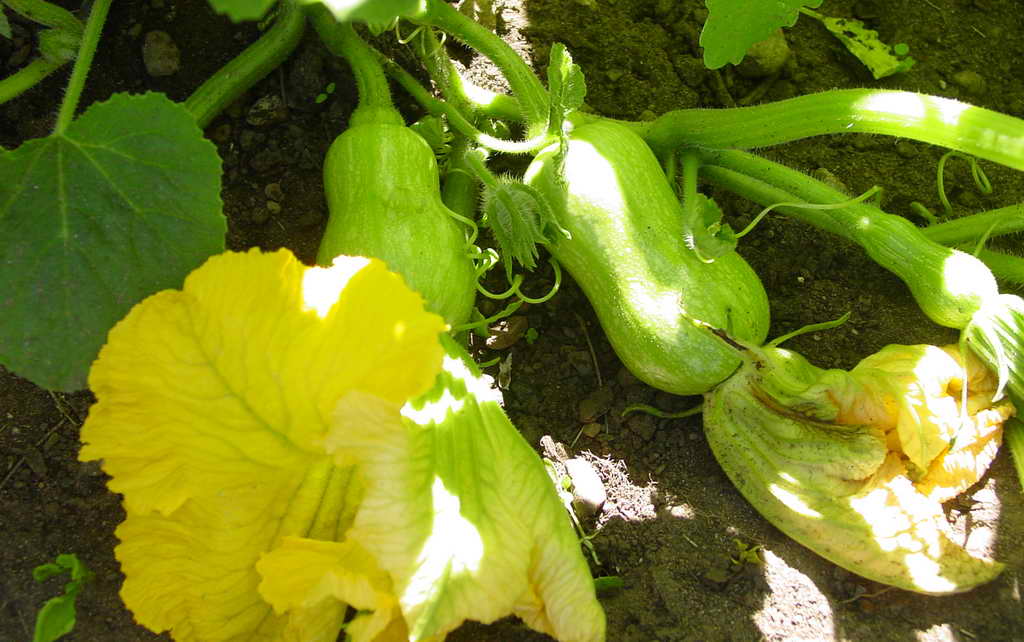
The first harvest of the Pattypan squash. Much better than useless, watery, zucchini. Those are J's hands, and her wasp stings are almost healed.
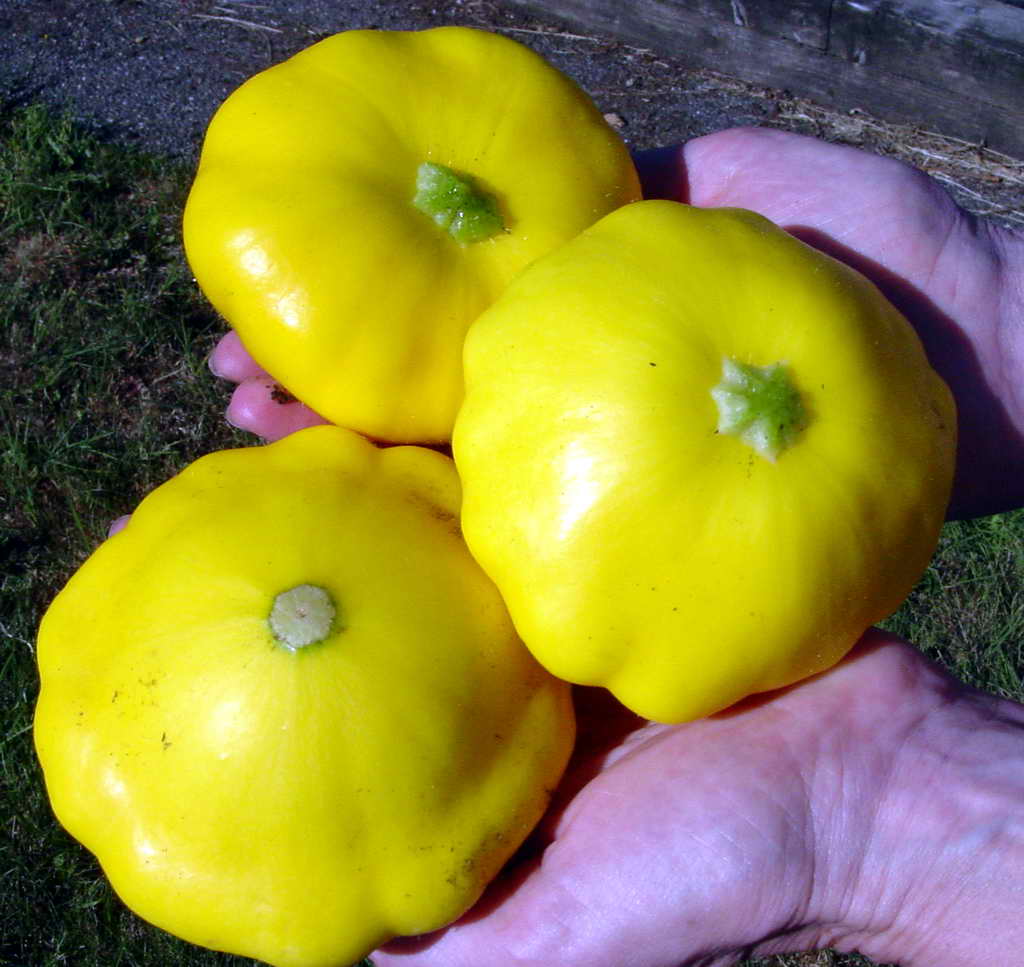
One little, tiny, 2" long cucumber on a tortured plant. Low expectations here.
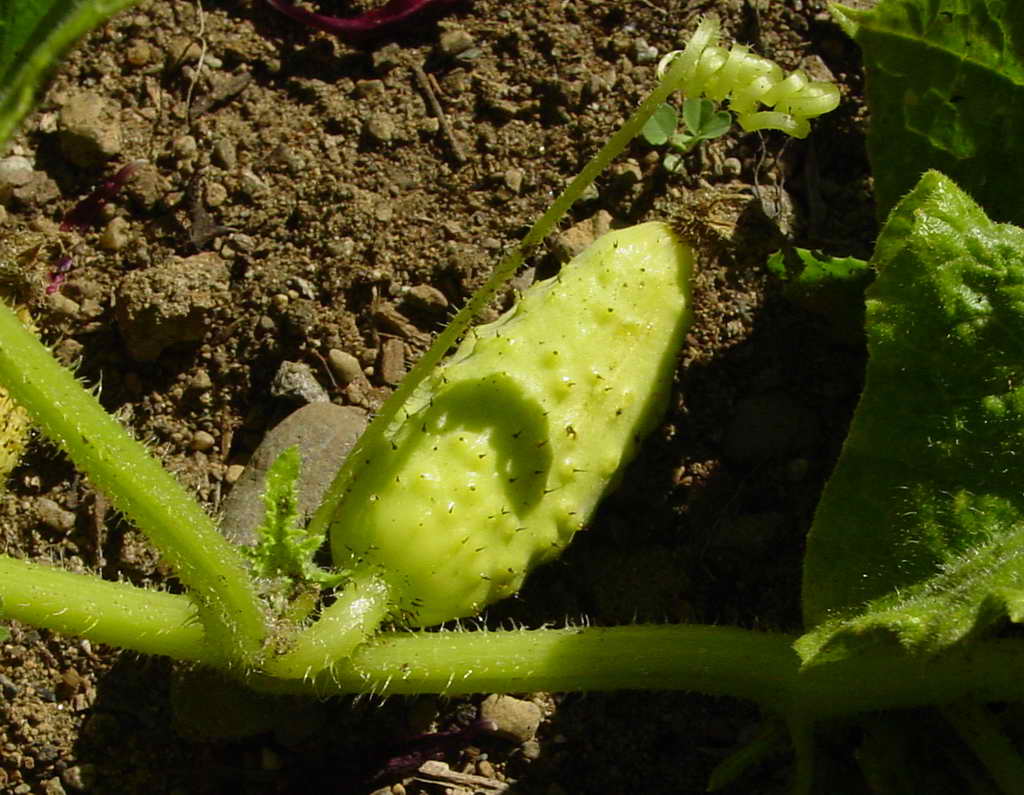
And here are the tomatoes against the fence. Already had a few cherry tomatoes.

You've seen the breba crop of figs in previous posts, here is the first buds for the main crop on the Desert King variety.
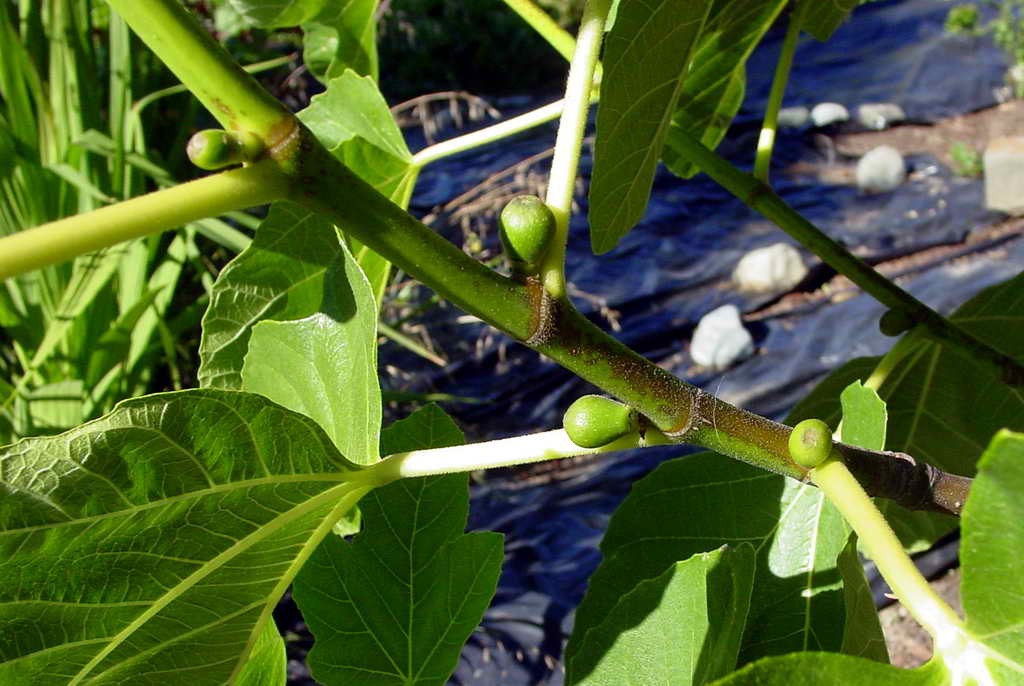
Asian lilies are blooming too.
